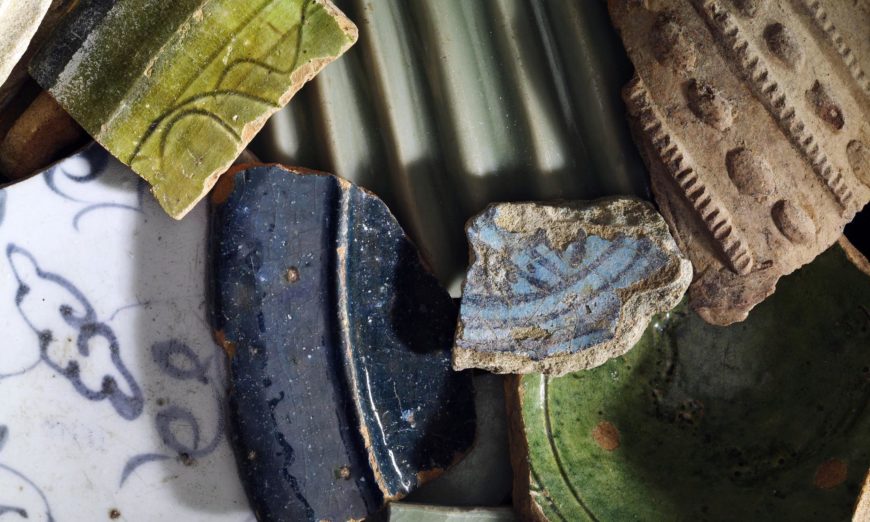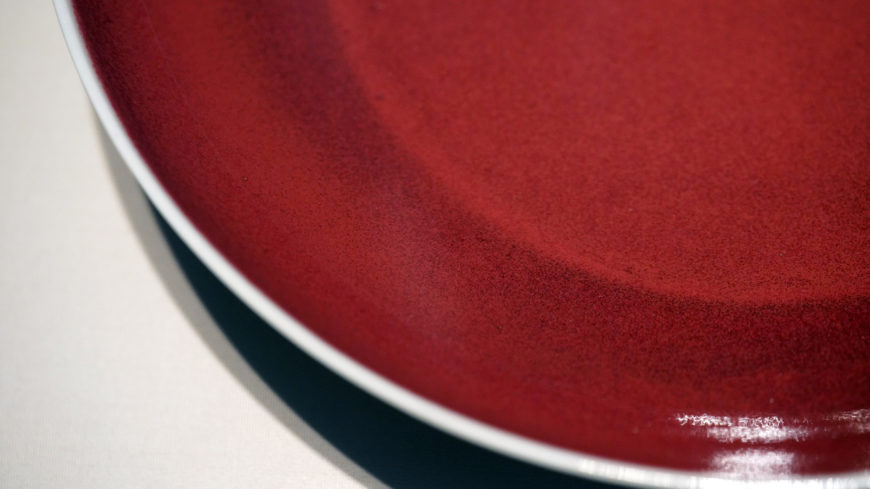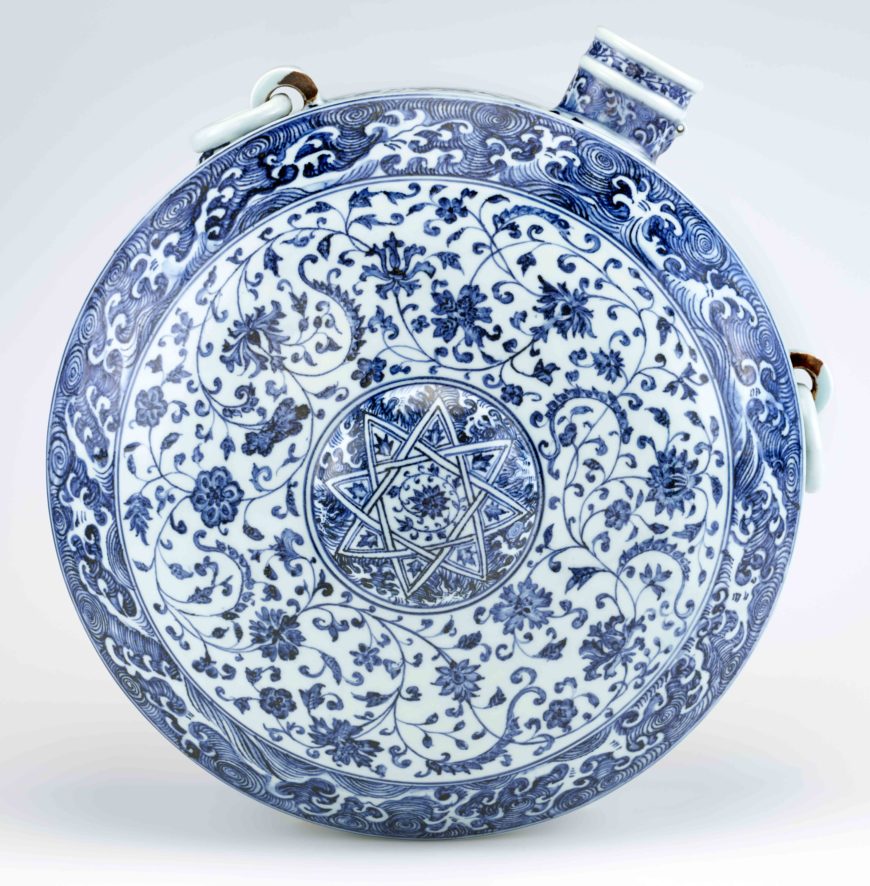
Canteen, Ming dynasty, early 15th century, Jingdezhen ware, porcelain with cobalt pigment under colorless glaze, China, Jiangxi province, Jingdezhen, 46.9 × 41.8 × 21.3 cm (Freer Gallery of Art, Smithsonian Institution, Washington, DC: Purchase — Charles Lang Freer Endowment, F1958.2)
Look at this interestingly shaped ceramic object made of porcelain produced in Jingdezhen. By the thirteenth century C.E., the potters there had developed a recipe for a compound clay, which when fired to an extremely high temperature, created a stunning white ceramic material. The object is in the shape of a canteen, or water carrier. It has a circular body. On a functional canteen, the loop and ring handles on each side of the neck would have held a leather strap to make it easy to carry the vessel over one’s shoulder; however, this canteen seems too heavy to use in that way. The short, cylindrical ribbed neck would originally have had a cover or stopper. The front of the body is decorated with intricate blue patterns on a white background: a ring of waves encircles the edge and, inside the ring, a floral scroll fills the surface. The center of the canteen has a dome with a central, wave-like pattern surrounding an Islamic eight-pointed star, leaves, and a lotus scroll. Each point of the star contains a single leaf. The side of the body is covered with a continuous scrolling design of lotus and other flowers. The back is undecorated and unglazed porcelain (without color).
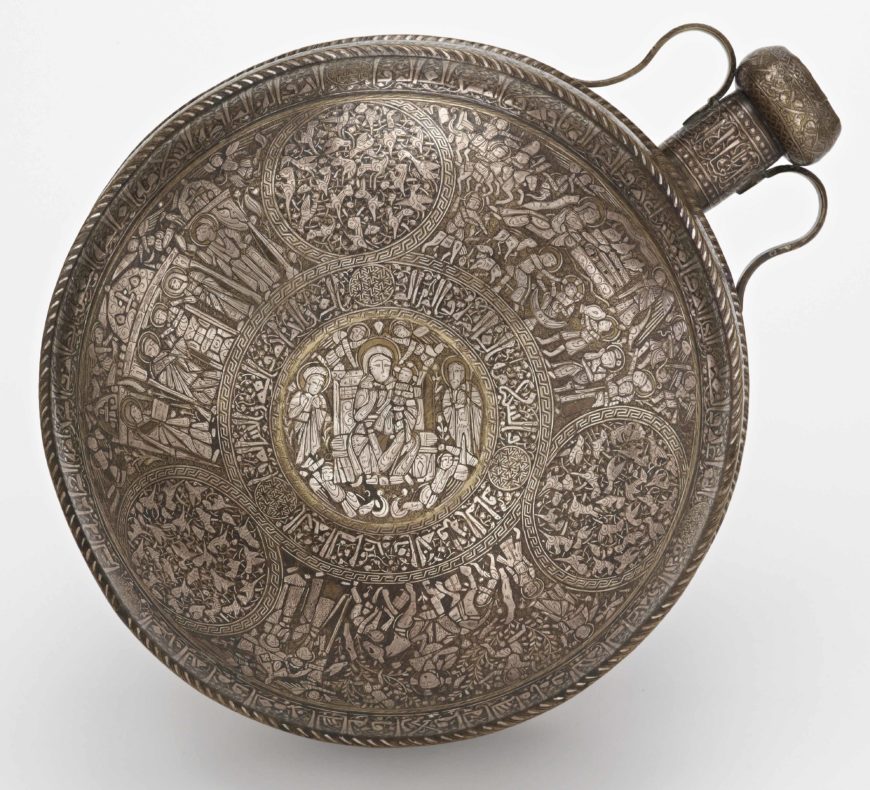
Canteen, Ayyubid period, mid-13th century, Mosul School, brass, silver inlay, Syria or Northern Iraq, 45.2 x 36.7 cm (Freer Gallery of Art, Smithsonian Institution, Washington, DC: Purchase — Charles Lang Freer Endowment, F1941.10)
Canteens were common objects used by ordinary people to carry liquids. Religious pilgrims in the European Middle Ages (fifth to fifteenth century) also used them to hold holy water and oil. In the thirteenth and fourteenth centuries, artists in the Near East created elaborate metal canteens that seem to have inspired this Chinese example. The eight-pointed star in the center, for example, is a symbol often found in Islamic art.
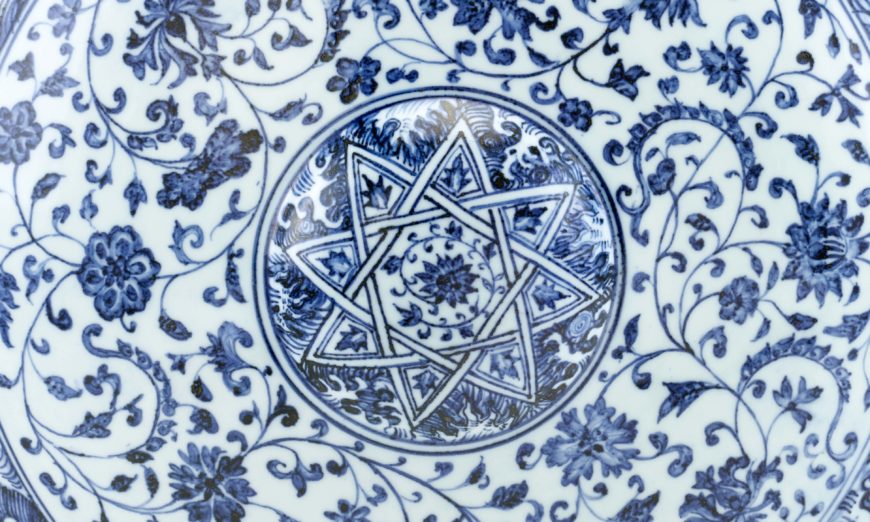
Canteen (detail), Ming dynasty, early 15th century, Jingdezhen ware, porcelain with cobalt pigment under colorless glaze, China, Jiangxi province, Jingdezhen, 46.9 × 41.8 × 21.3 cm (Freer Gallery of Art, Smithsonian Institution, Washington, DC: Purchase — Charles Lang Freer Endowment, F1958.2)
However, the technique used to create this canteen reflects its origin in China. The material of white porcelain decorated with cobalt (blue) designs was a Chinese invention. The heavy weight of the canteen seems to suggest that it was made for decorative or ornamental purpose rather than for actually carrying water. It may have been hung on the wall or placed on a flat surface in a wealthy patron’s residence.
During the reigns of the Yongle and Xuande emperors (1403–35) in the Ming dynasty, potters at the famous Chinese porcelain-producing town of Jingdezhen quickly absorbed artistic ideas from imported foreign goods. They experimented with many shapes and decorations modeled after Islamic silver, gold, and brass vessels. This canteen, with its unusual shape and decoration, was either made to be exported to the Near East or was made for a follower of Islam living in China. It exemplifies the dynamic flow of ideas and objects between the Islamic world and China that invigorated both artistic traditions.
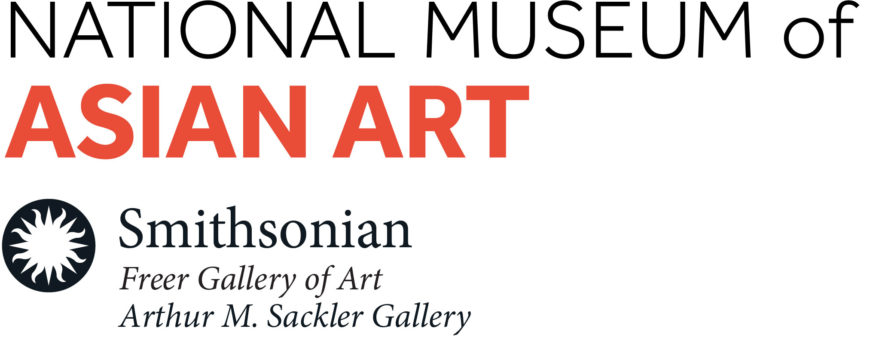 This resource was developed for Teaching China with the Smithsonian, made possible by the generous support of the Freeman Foundation
This resource was developed for Teaching China with the Smithsonian, made possible by the generous support of the Freeman Foundation


